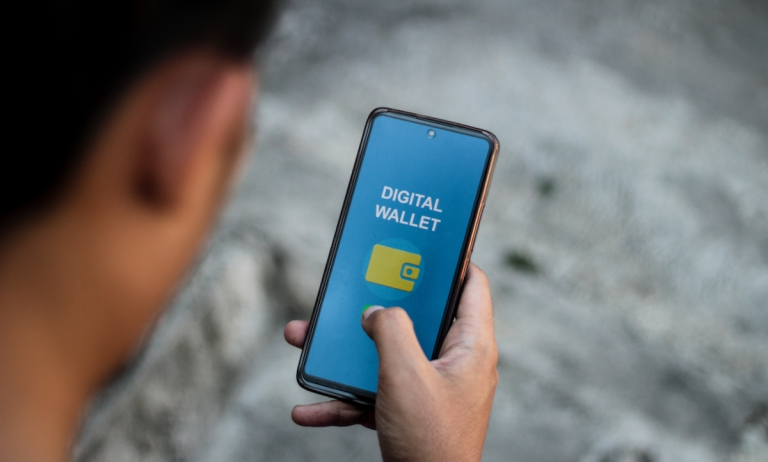
Digital wallets have become the preferred choice for consumers worldwide as cross-border transactions change.
A PYMNTS Intelligence report, “Global Money Movement: How Digital Wallets Are Transforming Cross-Border Payments,” in collaboration with TerraPay, surveyed 2,601 consumers, 398 small business leaders and 80 financial institution (FI) employees in four countries to explore the trend of digital wallets and related challenges and opportunities in the global payment system.
From the U.S. to Saudi Arabia, people are leveraging digital wallets due to their fast and efficient way to send and receive money internationally. This shift in payment preferences speaks to the demand for convenience and simplicity, the report notes, especially when compared to traditional methods like bank transfers or money transfer services.
Among the countries surveyed — Saudi Arabia, Singapore, the U.K. and the U.S. — digital wallets emerged as the leading option for cross-border payments. On average, the report shows 42% of consumers across these countries preferred digital wallets for their international transactions.
US Leads in Digital Wallet Adoption
The U.S. stands out with 44% of consumers choosing digital wallets over other payment methods, the report notes, far ahead of other options like bank accounts and money transfer services. Consumers are more likely to send money to family or friends, a common type of cross-border payment. Nearly 75% of U.S. consumers who made cross-border payments in the past year sent money to their loved ones. These transactions are often remittances, underscoring how important digital wallets have become in the process of sending small, frequent payments across borders.
Singapore: A Tradition of Bank Transfers
In contrast, Singapore shows a different trend. Only 27% of Singaporean consumers prefer using digital wallets for cross-border transactions, with 37% still relying on bank accounts. This reliance on traditional banking services may stem from Singapore’s advanced financial infrastructure, where people have been accustomed to using bank accounts for payments. While the use of digital wallets is gaining traction, it has not yet surpassed the comfort and familiarity of bank accounts, which remain a preferred method for many Singaporeans.
Saudi Arabia: A Blend of Digital and Traditional Payments
Meanwhile, Saudi Arabia provides an interesting case with a blend of digital and traditional methods. Like other countries, remittances sent to family and friends are common, but payments from employers and gig platforms are also significant. In Saudi Arabia, the report shows, digital wallets are highly favored for sending and receiving payments as well, though the shift has been slower compared to other regions. But the country’s reliance on traditional banking methods for certain payment types has slowed the overall adoption of digital wallets.
Speed and Convenience Drive Digital Wallet Adoption
One reason digital wallets are preferred for cross-border transactions is their speed and convenience, according to the report. Digital wallets provide an efficient way to move money without the delays that often accompany bank transfers or money transfer services. This speed is particularly valuable for consumers who send small-value payments regularly, such as remittances to family members. The ease of linking a digital wallet to a mobile device means sending money across borders is as simple as a few taps on a screen, removing much of the complexity that accompanies traditional methods.
Another factor contributing to the preference for digital wallets is the ability to send money to recipients who use the same wallet. Many consumers who use digital wallets for cross-border payments report that they typically send money to people who also use the same service. This creates a streamlined, seamless experience that avoids the friction associated with using multiple payment systems.
In countries like the U.S., U.K. and Saudi Arabia, nearly two-thirds of digital wallet users said they typically send funds to recipients who use the same mobile wallet. This level of compatibility is an advantage over traditional methods, which often require coordination between different banks or services to facilitate the transfer.
Overcoming Interoperability Challenges
While the trend toward digital wallets is evident in several regions, challenges remain, according to the report. Interoperability, or the ability for different wallet systems to work together smoothly, continues to hinder the growth of cross-border transactions. Even in markets where digital wallets are popular, consumers may still face challenges when sending money to different countries or dealing with different currencies. These issues highlight the need for further integration and innovation within the digital wallet ecosystem to make global money movement easier and more efficient for all users.
Preferences for cross-border payment methods vary by region, but digital wallets are clearly becoming a key tool for international transactions. Their ease of use, speed and capacity to manage frequent, small-value payments make them an appealing option for many consumers. As interoperability improves and the digital wallet infrastructure expands, more consumers around the world are likely to rely on them for cross-border payments.
Source: www.pymnts.com




